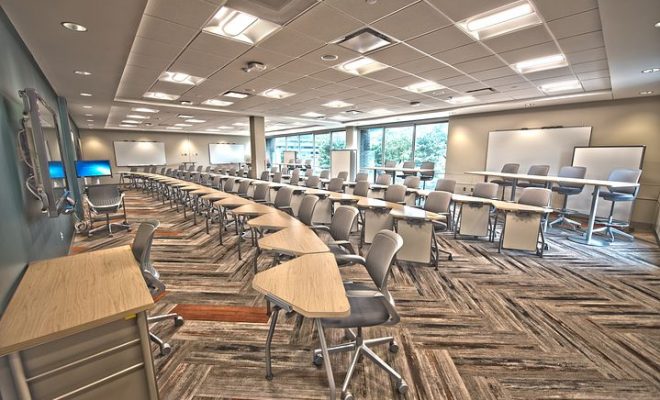K–12 Leaders Get Creative to Make the Case for Network Upgrades

Although many more schools have high-speed internet today than they used to, there are still schools using dial-up internet. How are students going to learn the digital skills of tomorrow using snail-speeds? How are teachers going to use the best tools available to teach their students when the internet available won’t support those tools? Every classroom can have that opportunity. It’s time that K—12 leaders get creative to make the case for network upgrades!
What Are the Network Recommendations?
The network recommendations for the 2020/2021 school year were adopted by the FCC in 2014. According to this recommendation, the target for a small school district (one with fewer than 1,000 students) is at least 4.3 Mbps per user, with a minimum of 300 Mbps per district. A medium-sized district (3,000 students) has a target of at least 3.0 Gbps per every 1,000 users. Lastly, a large school district, which is a district containing over 10,000 students, should have a target of at least 2.0 Gbps per every 1,000 users. “Users” include administrators, staff, teachers, students, and guests.
SETDA.org makes a further recommendation for WAN access. SETDA recommends that each district have a target of at least 10 Gbps per every 1,000 users for the 2020/2021 school year.
Where Are Schools Lacking?
There are several areas that K—12 schools are lacking in, not just in the areas of network. The Wi-Fi equipment is outdated. The engineering on the Wi-Fi that’s there is poorly implemented. The Wi-Fi network equipment is piecemealed together. The Wi-Fi access coverage designs are insufficient and use the incorrect number of access points. The applications and resources are piecemealed from different vendors. There’s not enough bandwidth. There’s not enough funding. The security is low, and there are user access management issues. The technology staff is overburdened. Those choosing the equipment, such as the cabling, peripherals, Apps, and switches, lack experience.
Why Are the Schools Lacking?
Some of this has to do with the money just not being available to be given to that department. However, more often than not, it’s available but not being shared. Why? Those in charge of handing out the finances don’t see the need. It’s up to you, dear K—12 leader, to help them to see the need!
What Can We Do?
Let’s take a look at how two different states are stepping up to the plate in this fight and see what we can learn from them.
North Carolina
According to the CIO of the North Carolina Department of Public Instruction, Michael Nicolaides, their school districts are basically funded 100%. To accomplish this, the district filed for and received funding from the E-rate program. Nicolaides states that the NCDPI is funding what’s remaining of the broadband and internal connection costs. Altogether, North Carolina has set aside 32 million dollars in recurring funds for this.
New Mexico
The year 2015 saw some changes in the education world in New Mexico as Governor Susana Martinez made an announcement that would enable schools to make leaps in the right direction. She was determined that every New Mexico classroom would have high-speed internet access by 2018. Starting that year, several state agencies, including the Public Education Department (PED), the Public Schools Facility Authority, and the Department of Information Technology, worked together with the EducationSuperHighway to make this plan come closer to fruition.
Conclusion
According to the EducationSuperHighway.org, “99% of America’s schools now have high-speed broadband connections capable of providing enough bandwidth to enable their students and teachers to use technology in the classroom.” But is that enough? And what about that other 1%?






